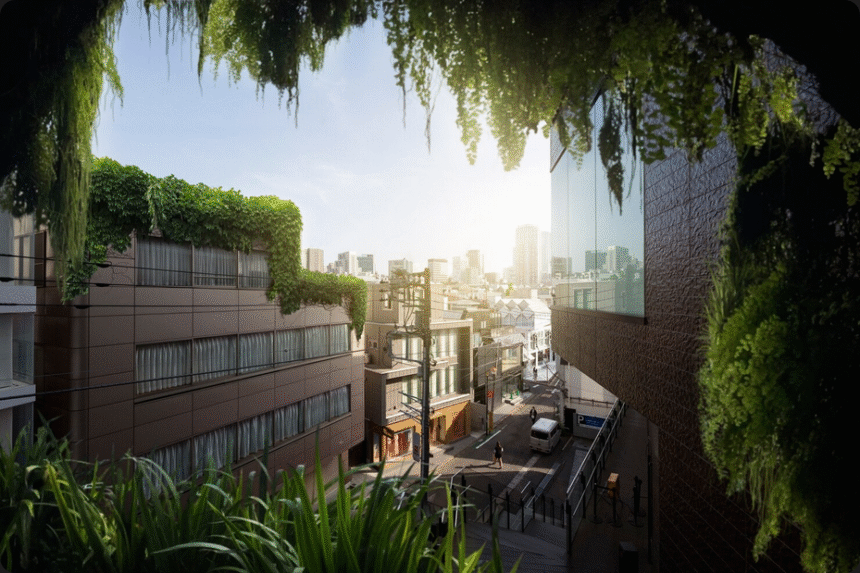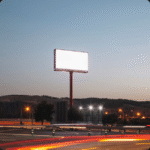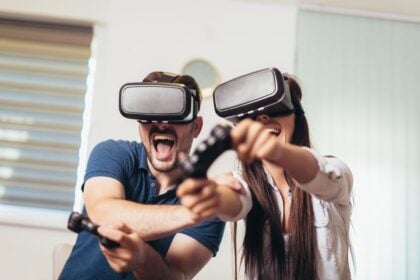Imagine the same lights that guide your stroll also telling you how clean the air is on your block. That’s the quiet revolution of smart streetlights — lighting the path and decoding the atmosphere.
🌟 Why smart streetlights are a bigger deal than brighter bulbs
The humble streetlight just got a brain. By embedding compact air quality sensors into existing poles, smart streetlights turn a fixed cost (lighting) into a citywide environmental intelligence network. Instead of one or two monitoring stations covering miles, you get dense, block-by-block readings that actually match how people live, commute, and exercise.
For a wider look at how people-first tech elevates everyday life, see BigTrending’s explainer on where technology meets human ingenuity — the same ethos driving smarter, cleaner streets.
“Smart streetlights with air sensors? That’s the future I want to live in! 🌆💡” — an X user
“Finally, a practical use of tech to fight pollution. Put these on every block.” — a Redditor
“They’re not just lighting streets; they’re lighting up possibilities.” — a TikTok user
🔬 The magic behind the lights (plain-English version)
What the sensors actually read
Small modules continuously sample urban pollutants like NO₂, CO, and PM2.5/PM10. Readings can be translated into the familiar color bands of the Air Quality Index so residents know, at a glance, when to go, slow, or stay indoors.
How the data travels
Each pole acts like a mini weather station. Measurements stream over cellular, LoRaWAN, or municipal Wi-Fi into a secure dashboard. With thousands of points per sensor per day, cities can spot patterns — not just bad days — and target fixes that actually move the needle.
Real-time, real-people value
Residents time their jogs for cleaner windows, schools plan recess with fewer asthma flare-ups, and transit teams test before/after changes to bus routes or idling rules with evidence instead of guesswork.
If you want a quick primer on the broader civic tech stack this plugs into, the smart city overview is a helpful glossary for platforms, sensors, and governance models.
📡 The tech stack: from pole to policy
- Advanced sensors: Low-power modules tuned for urban conditions, with scheduled calibration to prevent drift.
- Edge logic: On-device filtering trims outliers and keeps bandwidth lean.
- Data platform: Central QA, historical baselines, and APIs for public-facing maps.
- Citizen interface: Clean mobile maps and bus-stop displays that translate numbers into clear advice (“AQI improving after 7 pm”).
Pro tip: Pilot a mixed corridor (school zone + transit + freight). You’ll collect the most useful contrasts and build a compelling grant story fast.
🌍 Cities leading the charge
Barcelona uses sensor-rich infrastructure to tune mobility plans and public spaces. Los Angeles, long haunted by smog, pairs smart streetlights with electrification goals to push down corridor peaks. Singapore integrates environmental feeds into its Smart Nation stack so services feel coordinated instead of siloed.
Across very different cities, the same lesson applies: don’t isolate the air data — fuse it with traffic counts, land use, tree canopy, and transit schedules so action is obvious.
🧠 What changes when air data gets hyperlocal
- Healthier habits: People self-calibrate — choosing cleaner side streets, delaying a run, or closing windows during short spikes.
- Smarter enforcement: Target the true hotspots (truck cut-throughs, school pickup idling) instead of blanket bans.
- Visible equity: Historic environmental disparities show up on the map, guiding where to prioritize trees, e-buses, and freight routing first.
📊 From pretty maps to measurable wins
Track what matters and publish it:
- Average PM2.5 reduction in target corridors (6–12 months).
- Peak suppression — fewer days above health thresholds.
- Exposure minutes avoided for kids, older adults, and people with asthma.
- Policy ROI (e.g., fewer ER visits near interventions vs. control areas).
💡 Implementation blueprint
- Inventory poles (location, height, power, connectivity).
- Pick zones (schools, arterials, parks, at least one environmental justice area).
- Write QA rules (co-locate with reference monitors, set error bounds, schedule recalibrations).
- Publish a data policy in plain language (what’s collected, how long, how shared).
- Pilot, prove, scale — start with 50–200 sensors, show early wins, expand.
🧾 The budget reality (and where savings hide)
- Hardware + mounts scale by fidelity and ruggedization.
- Connectivity via bulk data plans or city networks.
- Maintenance for calibration and swaps — budget it from day one.
- Software for dashboards, alerts, and public maps.
Offsets help: smart poles can dim LEDs after hours (energy savings), host EV chargers or 5G small cells (new revenue), and consolidate separate programs (noise, weather) on one mast.
⚠️ Challenges — and working answers
- Privacy perceptions: Air sensors don’t ID people, but “smart poles” can spook residents. Publish a no video/no audio pledge unless explicitly required, keep air data open by default, and run hands-on demos.
- Sensor drift: Plan regular calibration and co-location testing to keep data trustworthy.
- Upfront cost: Use phased deployments and chase climate/health/equity grants to de-risk.
- Data overload: Appoint a data steward, set alert thresholds, and route signals to the right team (transport, health, schools).
🧭 Resident experience: what good looks like
- A clean, accessible map with color bands and “what to do now.”
- Opt-in alerts (“Your usual run route is improving”).
- Contextual nudges at bus shelters and bikeshare docks.
- School dashboards for nurses and PE teachers.
- Language access and ADA-friendly design so everyone benefits.
🤖 What’s next: AI, fusion, and citywide reflexes
- Predictive models that blend live sensor feeds with weather, traffic, and wildfire smoke to warn neighborhoods hours ahead.
- Autonomous responses: ventilation modes in public buildings adjust on their own; street sweepers and tree-watering routes trigger from data, not rigid schedules.
- Connected mobility: push low-pollution corridors to e-bike and scooter apps in real time so trips default to cleaner routes.
- Citizen science loops: invite residents to add home monitors, reward participation with utility credits or transit perks.
🧪 Field scenarios
School safety corridor: Morning NO₂ spikes along pickup routes drop after a temporary no-idling zone becomes a permanent habit.
Freight fairness downtown edge: Time-window restrictions plus GPS routing changes cool a truck cut-through identified by the streetlight array.
Parks on purpose: A tree row, a shifted bus stop, and a filtered misting station cut particulates at a playground hotspot.
🧰 Small-city starter kit
- Start with 25–50 poles on one corridor + two schools.
- Publish a three-page plan and a one-page privacy pledge.
- Stand up a basic web map and SMS alerts; iterate later.
- Partner with a local university for QA and interns.
- Use early wins to brief council with results, not hype.
🪙 The payoff: cleaner air you can feel, trust you can see
When cities get granular about air, people notice: fewer coughy mornings, more confident outdoor time, clearer views after storms. Just as important is trust — sharing data openly and acting quickly. Smart streetlights do both: they light the path and show the proof.
To connect this with broader retail and public-space design that blends human cues and tech, BigTrending’s deep dive on mobile marketing is the future of e-commerce shows how ambient systems guide behavior without shouting.
FAQs
How do smart streetlights detect air quality?
They use compact sensors on the pole to measure pollutants like NO₂, CO, and particulate matter. Readings feed a dashboard, and smart streetlights display or alert residents in near real time using AQI guidance.
What are the key benefits of integrating air quality sensors into streetlights?
You get dense, hyperlocal data for healthier daily choices, targeted policies, and better ROI because you use existing infrastructure — the essence of smart streetlights.
Which cities are implementing this technology?
Pioneers include Barcelona, Los Angeles, and Singapore, among others testing smart streetlights across school zones, freight routes, and parks. For definitions and common components, see the smart city primer.
What challenges do cities face with this technology?
Top issues are privacy perception, sensor maintenance, and upfront investment. Transparent policies, scheduled calibration, and phased rollouts help smart streetlights succeed.
How can residents use the data day to day?
Check the neighborhood map before outdoor plans, set AQI alerts for sensitive family members, and choose cleaner routes on high-pollution days — powered by smart streetlights.









